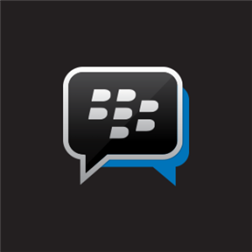Skype 7.0 lets you format your IMs
When you say, "lets Skype", you usually want to have a video call. That is what made Skype popular, and where its strength lies. However, lately Microsoft has also been focusing on written conversation, perhaps in reaction to how successful IM apps have been.
Microsoft updated Skype last week to 7.0 on Mac and Windows (beta), and one of the features overlooked in the UI redesign was formatting for instant messaging. You can now bold, italicize, or strike-through your messages.

4 vital ways collaboration can save your business
Since the global recession, many businesses have struggled to recover. For those that have survived, there are several areas where improvements must be made and belts must be tightened in order to ensure the business gets back to, and exceeds, 2007 levels of profitability and success.
There are several areas which businesses struggle with today, such as cutting costs, increasing efficiencies, and satisfying clients and employees. The adoption of enterprise cloud collaboration software can help businesses to address these issues and ensure that they stay strong and grow increasingly successful. Here are four areas where enterprise cloud collaboration software can help businesses improve and ensure they stay afloat during the tough times.
Google Hangouts is great, but will it ever be finished?
A year ago Google released project Babel. The search giant shared with us a grand vision of a unified and improved messaging and video platform. This vision started becoming reality with Google Hangouts. But in classic Google fashion, it was never finished.
Before Hangouts, there was Google Talk. And it was great. It was simple, and to the point. You could use it in third-party applications, it worked in your Gmail, and complaints were hard to come by. However, Google had been working on Google+ and that also had a chat -- one that was not compatible with Talk. So, Google promised unification; and when the users of Talk looked at their perfectly working service, and then back at Google skeptically, Google promised an unrivaled experience across platforms.

Migrating from Windows Server 2003: 12 best practices straight from the trenches
Most of us have hopefully managed to get off the sinking ship that was Windows XP. As much of a recent memory as that has become, a new end of life is rearing its head, and it's approaching fervently for those who haven't started planning for it. Microsoft's Windows Server 2003, a solid server operating system that's now about eleven and a half years old, is heading for complete extinction in just under 300 days. Microsoft has a fashionable countdown timer already ticking.
Seeing as we just finished our second server migration in a single week (a personal record so far), sharing some of the finer aspects of how we are streamlining these transitions seems like a timely fit. This braindump of sorts is a collection of best practices that we are routinely following for our own customers, and they seem to be serving us well so far.

I'm tired of my Microsoft PC breaking down on the Information Superhighway
Ninth in a series. User experience is an ongoing series of surprises -- discovery of something unexpected and useful when positive and discovery of annoying glitches when negative. Both evoke emotional responses. The latter is devastating as little frustrations build to crescendo. That's the state I near with my "Microsoft All-In" experiment. Dissatisfaction grows.
I started this journey on July 1, after buying Surface Pro 3. The tablet-hybrid promised so much, and my overall experience with the hardware is excellent. I can't say the same about the operating system, web browser, or supporting services. Clunky is good word. Think old car that runs well on the highway but sometimes stutters and stalls at stoplights. The overall UX is nowhere as smooth as Chrome OS or OS X.

Why Facebook Messenger for Android needs those permissions
Seeing Android apps requesting various permissions in order to install can be disconcerting for inexperienced users. How can one know if there is a valid reason to trigger them, or if an offering will maliciously use those permissions? Those are valid concerns, after all, as a third-party, that we have little control over, is entrusted with access to critical features, like the microphone or contacts list. In this day and age, you can never be too cautious.
Facebook has decided to drop the chat functionality from its Android app, asking users to turn to Facebook Messenger to message their friends. And, naturally, quite a few of its users, who are likely new to the offering and find themselves forced to use it, are voicing their concerns over its permissions, as they allow it to do some potentially dangerous things.

If you'd rather not own it, Leak it
If you have something to say, you can either say it to a person's face or resort to Leak, a new cloud service that lets you send anonymous emails that will likely never be traced back to you if some common sense is used. I prefer the open approach, but I sense that today quite a few people will embrace the latter.
The possibilities are endless. You can send any sort of message through the service, as long as you don't push things too far. Leak would rather you don't threaten or bully people, encourage damaging behaviors, send "graphic" images or porn, spam or share private information. Of course, based on the anonymous emails I am seeing (some sent "leaks" are publicly shared on the site), there are users who will do the obvious: abuse the service and act immaturely.

Microsoft announces Windows Phone 8.1 Update 1, Cortana coming to new markets
Today, Microsoft announces the first major update for Windows Phone 8.1, called Update 1. It introduces new features and improvements over the version which the software giant unveiled earlier this year at Build 2014, and makes way for Cortana to arrive in new markets.
In Windows Phone 8.1 Update 1, Microsoft adds Live Folders, allowing users to group live tiles on the Start screen. Like the name suggests, it is able to display updating information on its tile, coming from the items it contains. A live folder can be created by dragging a live tile on top of another.

BBM for Windows Phone available to beta testers
You may recall that, earlier this month, BBM finally made its way to Windows Phone Store, after arriving on Android and iOS last year. It was not made publicly available, as BlackBerry chose to conduct a beta testing trial before its official launch.
As one of the folks who quickly signed up for the beta program, I just received an email from BlackBerry detailing what sort of features are available to test, what the known problems are, and how to provide feedback. Here is what fellow beta testers can expect.

BlackBerry details BBM for Windows Phone
After being announced in late-February, BBM finally landed in Windows Phone Store earlier this week. The messaging app is not yet generally available though, as it was published as a private beta. But BlackBerry is giving impatient BBM fans and prospective users the opportunity to join an "external" testing program.
Ahead of the public release, BlackBerry also showcases what the first BBM iteration can do on Windows Phone. First off, the Canadian maker has designed the app so it feels and looks, per BlackBerry's own words, like a native Windows Phone offering. That is a significantly different approach to what it has done with BBM for Android and iOS, both of which look much like the BlackBerry OS counterpart.

Twitter for Windows Phone finally gets some attention
Twitter may have an official Windows Phone app, but the offering is sorely lagging behind its Android and iOS counterparts in the features department. That is because the updates come only a couple of times per year, and, even then, they fail to bring the latest goodies on the platform.
Luckily for those who are willing to put up with the offering, Twitter has finally released a new update for its Windows Phone app, the first one to come in 2014. And to show just how much it cares about the platform and its users, Twitter has not even announced the update on its blog (but, Microsoft did).
BBM lands in Windows Phone Store (but you can't get it yet)
I have been waiting for BBM to make its triumphal arrival in Windows Phone Store for quite a while now. Its launch was revealed in February. Android and iPhone users are luckier, as the messaging app already launched on those platforms in the fall of 2013. But it now looks like Windows Phone users might soon also be able to join the party, and exchange PINs.
BlackBerry has published the BBM app for Windows Phone, but sadly for interested users it is not yet available for everyone to download, as it now undergoes private testing. That means only a select few can install it. Still, some progress is better than no progress at all, especially for those rocking a smartphone running the tiled operating system.

I am Microsoft All-In
Sixth in a series. On July 1, I officially started my "Microsoft All-In" summer sojourn. Surface Pro 3 is my PC and Nokia Lumia Icon my smartphone for the next couple of months. Google gets the boot -- at least for awhile. I now largely use Microsoft products and services and third-party apps available for the company's platforms. Many commenters wonder why, so let me explain.
I last used Windows as my primary platform in 2010 -- never for Windows Phone. Like other BetaNews reporters, I tend to write about products used regularly. Writing is more authoritative from experience, and often only long-time use reveals hidden problems or benefits. The reality, and it's something obviously seen in comments: Microsoft platform users largely make up BetaNews readership.

I declare independence from Google
Fifth in a series. Two years ago today, I stepped away from Apple, following a boycott later abandoned. My problems were philosophical, regarding the company's aggressive patent litigation that thwarts innovation. This July Fourth I seek freedom from Google, and not for the first time. I don't oppose the search and information giant, nor like fanboy rally for it. I declare independence as a practical exercise; an experiment. Can you -- OK, I -- do without Big G's expansive portfolio of products and services? I want to know.
In many regards, Google is the Internet gatekeeper U.S. trustbusters asserted Microsoft would be, in their late-1990s court case. Big G is unquestionably a monopoly that integrates features and products for competitive gain. In the United States, Google's search share is about 67 percent (3.5 times greater than second-ranked Microsoft), according to ComScore, and as much as 90 percent in some countries. Android's worldwide smartphone share is about 80 percent, according to IDC.

Windows Phone users can also Yo now
Communication tools have evolved so much in the past couple of years alone, with developers adding even more features and improving existing ones to allow us to better communicate and understand each other. Improved voice and video calls? Group chats? Instant translations? New, cooler emoticons? You bet!
On the other hand, we have chat app Yo, which, instead of trying to offer more than the rest of the growing pack, is trying to differentiate itself by giving users as little features as possible -- they can only say "Yo". It launched nearly two weeks ago for Android and iOS, and now it arrives on Windows Phone too.
